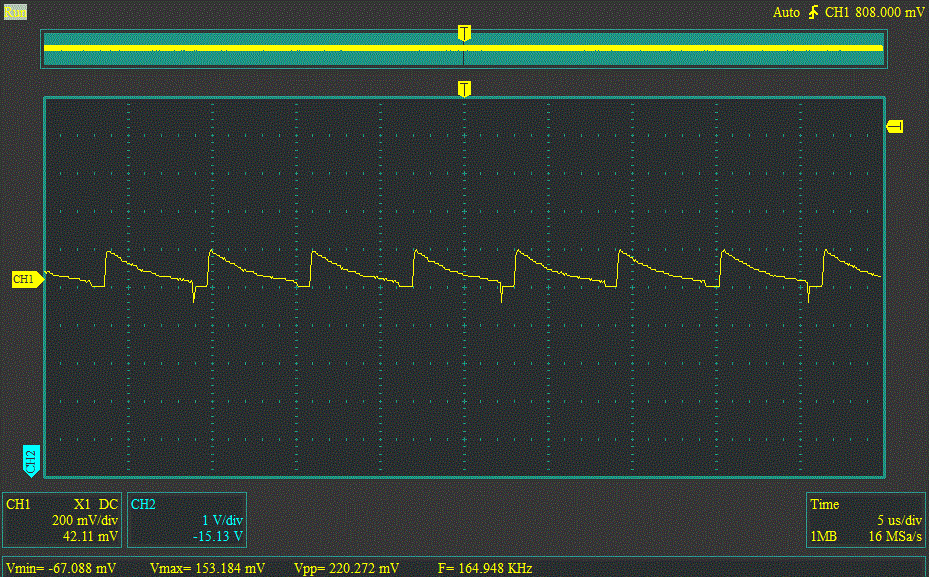I'm trying to build a DC-DC split-rail converter using circuit from this article. My goal is to split 12..14V input voltage into +2.4V and -2.4V. To do that, I choosed LM1501AGR-ADJ IC, calculated the needed inductance value (15 uH) and made the coupled inductor, then built the following circuit:
It works OK, but only when I apply a certain load. When the load is 1K or more, Vout- is about -11V, and Vout+ is -0.2V (input voltage is 12V). Load resistance of 220R or less makes Vout- equal to -2.39V, and Vout+ to 2.36V, which is just fine for my purposes.
I don't like the fact that circuit needs some "dummy" load to work correctly, because it means aditional power consumption. I'm gonna use battery as the power supply, so I whant it to consume as less power as possible. Besides, it looks like a very quick'n'dirty solution. Are there better ways to solve this problem?
To provide some additional information about the circuit, I tried to obtain the inductor's currents waveforms. To do that, I removed C2 and C3 and applied the load resistors 10R, than measured the voltage waveform on them. Here is what I got:
Primary coil
Primary coil - large scale
Secondary coil
By primary coil I mean the coil which is connected directly to IC.




